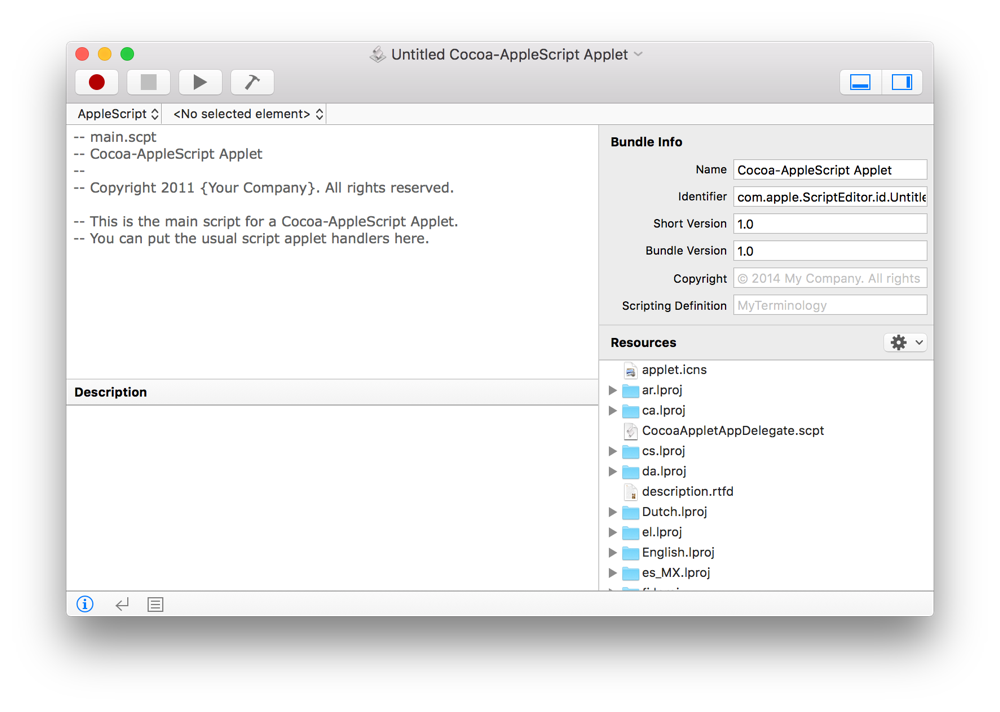Here are a bunch of Mac terminal commands sorted into general categories. I have intentionally omitted long bash scripts and AppleScripts and focussed instead on small useful commands that can be plugged into bigger scripts or used on their own enjoy! Terminal & Shell Basics cmd+n – Open a new Shell in a new window. Run Scripts with a GUI With previous versions of Python, there is a peculiarity of Mac OS X that you should keep in mind: programs communicating with the window manager called Aqua (in other words, anything that has a GUI) must have a special way to run. Scripts for macOS provides macOS scripting services. No task is too small or too large for us. We make coding scripts look easy! We deliver top quality scripts based on your needs with code so easy to.
I'm a longtime Windows and Linux user and have had some weird experiences writing shell scripts on Mac OS X. In particular, I can write the scripts just fine and run them from the terminal, but every time I try running one from a Finder window it always executes from the user's home directory rather than the directory in which the script lives. AppleScript is a scripting language developed by Apple to help people automate their work processes on the Mac operating system. It accomplishes this by exposing every element of the system's applications as an object in an extremely simple, English-like language. AppleScript is to the Mac OS as JavaScript is to browsers.

This is an extension attribute script to determine if the user assigned to the computer is a member of a given AD group or groups.
Fruit smoothie slot. In the example below, the script will return a 'Yes' result if the user to which the computer is assigned in Jamf Pro is a member of the groups 'ADGroupX' or 'ADGroupY'.
Scripts Of The Ancients Mac Os Catalina
The script will…
- Get the computer's serial number
- Pull the computer record via the Jamf Pro API
- Harvest the contents of the 'username' field
- Get the domain via dscl (computer must be bound to AD)
- Determine if 'username' is a member of 'ADGroupX' or 'ADGroupY'
This script can certainly be cleaned up a bit but does the job effectively.
The script can also be found on GitHub below.

This is an extension attribute script to determine if the user assigned to the computer is a member of a given AD group or groups.
Fruit smoothie slot. In the example below, the script will return a 'Yes' result if the user to which the computer is assigned in Jamf Pro is a member of the groups 'ADGroupX' or 'ADGroupY'.
Scripts Of The Ancients Mac Os Catalina
The script will…
- Get the computer's serial number
- Pull the computer record via the Jamf Pro API
- Harvest the contents of the 'username' field
- Get the domain via dscl (computer must be bound to AD)
- Determine if 'username' is a member of 'ADGroupX' or 'ADGroupY'
This script can certainly be cleaned up a bit but does the job effectively.
The script can also be found on GitHub below.
Scripts Of The Ancients Mac Os Catalina
Fostering innovative and open methods and tools in the classroom and beyond.
The land of the seazogs mac os. Expanding the scope and impact of traditional and digital humanities for the contemporary world.
Thinking critically about the role and design of technology, data and the social sciences in our lives and learning.
Promoting openness, access, and diversity in technology, and education in service of an equitable society.
Promoting change in schools, museums, libraries, and other organizations.
Reincarnating heroes mac os. Advocating for new forms of scholarly communications, including blogging, multimedia, open publishing, and academic journals and presses.

